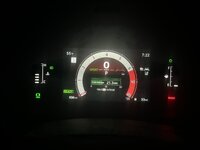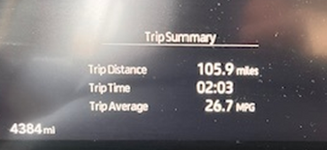My lc has about 900 miles on the clock and my daily commute consist of short 6 mile route with 1000 ft decline for a mile or so and 5 miles of some what flat street roads. My gas mileage on daily commute is about 17mpg.
This afternoon I decided to travel the same loop 2x totalling 24 miles with the only difference being the engine is already warmed out through daily useage while having the boost and I force max guage on to see if I notice a difference
Right off the start the engine would completely turn off anytime I was off the gas pedal under no load. And when it would come on, the I force max gauge would provide torque upto 25% with very little to no boost on the gauge, resulting in 21mpg on 33 inch tires. This is a massive 4 mpg gain compared to what I normally get with the cold engine .
I could easily achieve 25mpg if my commute did not involve 1000 ft of elevation change.
Another interesting thing to point out is that every time the ignition is cycled , regardless of engine temp, the truck would use 100% of electric motor torque ( iforce max guage at 100%) and 0 boost for Atleast 2 min before defaulting to normal boost operation.
I read a lot of comments about mpgs improving after 1k miles and I’m wondering if it is due to higer usage of the hybrid system over the engine like I have been experiencing today
This afternoon I decided to travel the same loop 2x totalling 24 miles with the only difference being the engine is already warmed out through daily useage while having the boost and I force max guage on to see if I notice a difference
Right off the start the engine would completely turn off anytime I was off the gas pedal under no load. And when it would come on, the I force max gauge would provide torque upto 25% with very little to no boost on the gauge, resulting in 21mpg on 33 inch tires. This is a massive 4 mpg gain compared to what I normally get with the cold engine .
I could easily achieve 25mpg if my commute did not involve 1000 ft of elevation change.
Another interesting thing to point out is that every time the ignition is cycled , regardless of engine temp, the truck would use 100% of electric motor torque ( iforce max guage at 100%) and 0 boost for Atleast 2 min before defaulting to normal boost operation.
I read a lot of comments about mpgs improving after 1k miles and I’m wondering if it is due to higer usage of the hybrid system over the engine like I have been experiencing today




